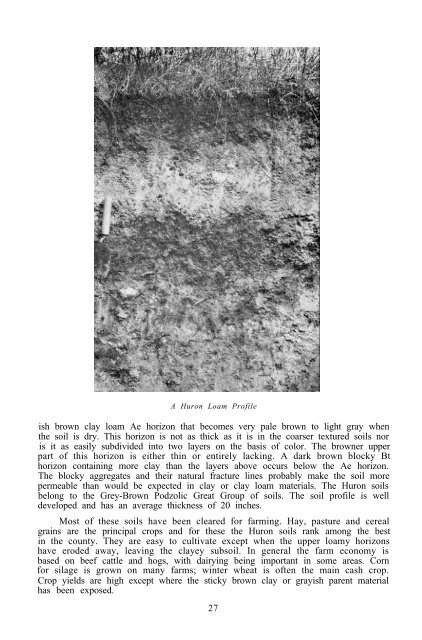Untitled - Agriculture and Agri-Food Canada
Untitled - Agriculture and Agri-Food Canada
Untitled - Agriculture and Agri-Food Canada
Create successful ePaper yourself
Turn your PDF publications into a flip-book with our unique Google optimized e-Paper software.
A Huron Loam Profile<br />
ish brown clay loam Ae horizon that becomes very pale brown to light gray when<br />
the soil is dry. This horizon is not as thick as it is in the coarser textured soils nor<br />
is it as easily subdivided into two layers on the basis of color. The browner upper<br />
part of this horizon is either thin or entirely lacking. A dark brown blocky Bt<br />
horizon containing more clay than the layers above occurs below the Ae horizon.<br />
The blocky aggregates <strong>and</strong> their natural fracture lines probably make the soil more<br />
permeable than would be expected in clay or clay loam materials. The Huron soils<br />
belong to the Grey-Brown Podzolic Great Group of soils. The soil profile is well<br />
developed <strong>and</strong> has an average thickness of 20 inches.<br />
Most of these soils have been cleared for farming. Hay, pasture <strong>and</strong> cereal<br />
grains are the principal crops <strong>and</strong> for these the Huron soils rank among the best<br />
in the county. They are easy to cultivate except when the upper loamy horizons<br />
have eroded away, leaving the clayey subsoil. In general the farm economy is<br />
based on beef cattle <strong>and</strong> hogs, with dairying being important in some areas. Corn<br />
for silage is grown on many farms; winter wheat is often the main cash crop.<br />
Crop yields are high except where the sticky brown clay or grayish parent material<br />
has been exposed.<br />
27

















